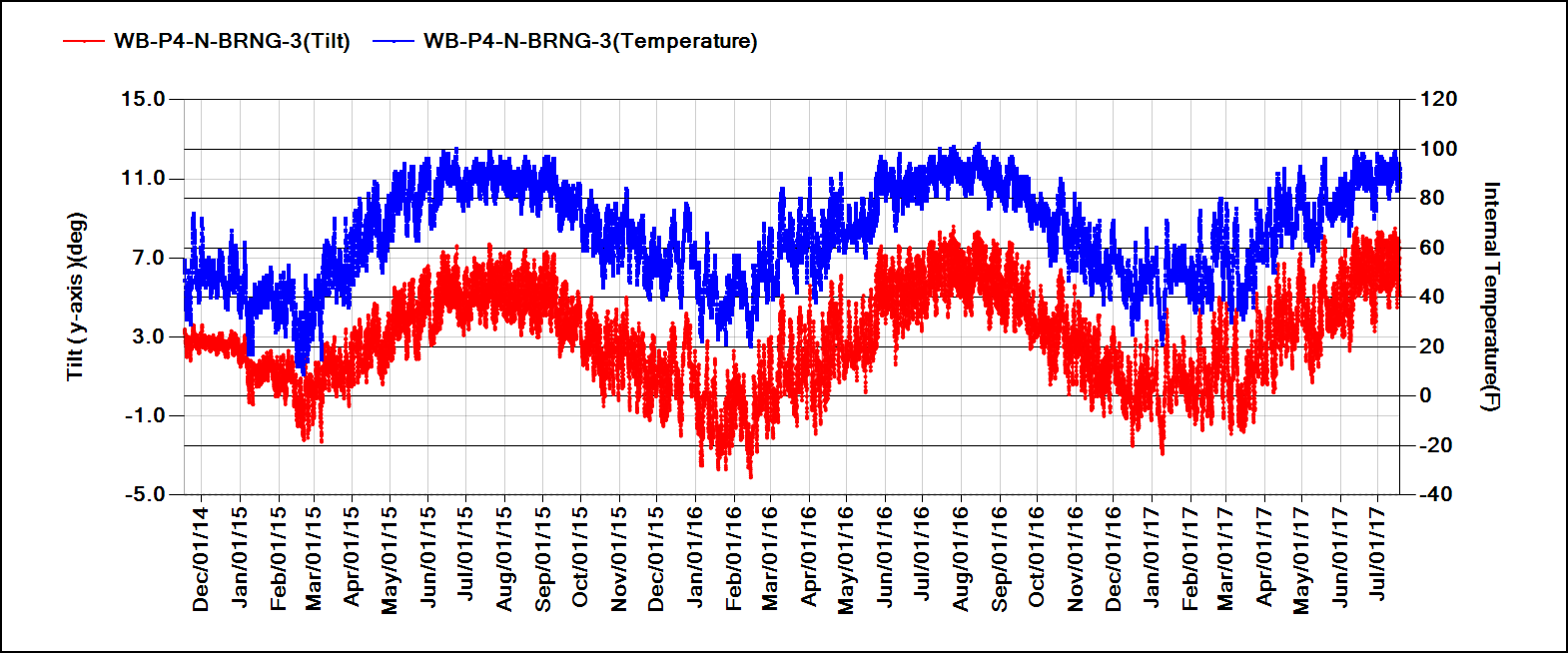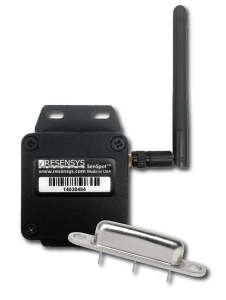La solución de monitoreo inalámbrico más eficiente del mundo con la ayuda de los sensores electrolíticos de inclinación de Fredericks

Introducción
There are over 612,000 bridges in the United States and as of February 2017, almost 10% of them need to be repaired or replaced according to The American Road and Transportation Builders Association. That means that there are currently over 55,000 bridges that require real-time monitoring in order to avoid a catastrophe like the 2007 bridge collapse in Minneapolis, Minnesota.
¿Qué es Resensys?
Resensys ofrece soluciones rentables y ampliables para ayudar a evaluar la estabilidad estructural de estos y otros puentes de carreteras, de manera que se puedan determinar con precisión los problemas estructurales y planificar el mantenimiento y las reparaciones necesarias para garantizar la seguridad y la longevidad de los puentes.
Su solución inalámbrica de vigilancia de la salud estructural, SenSpot™, es para los puentes existentes y los puentes en construcción y cuenta con sensores inalámbricos pequeños, de bajo costo y fáciles de instalar, que miden una variedad de variables que afectan el rendimiento de un puente.
Nacida de la investigación realizada por el Presidente y Director Técnico Dr. Mehdi Khandani en la Universidad de Maryland, Resensys es líder en la vigilancia geoestructural en tiempo real y ofrece el sistema de vigilancia de puente inalámbrico más duradero con una vida útil mínima prevista de 10 años. Para obtener más información, visite http://www.resensys.com.
The Challenge
Aunque existen otros sensores en el mercado para la infraestructura de vigilancia, lo que diferencia a un dispositivo de Resensys es su consumo de energía ultrabajo, que utiliza sólo unos 4 microvatios, o aproximadamente 100 millones de veces menos que una bombilla típica. Esto significa que un sensor SenSpot tiene una vida útil mínima de 10 años usando sólo una pequeña batería ½-AA.
Para ofrecer un sistema de vigilancia tan eficiente y preciso, Resensys necesitaba encontrar un sensor de inclinación con una resolución de hasta una milésima de grado y que al mismo tiempo ofreciera un bajo consumo de energía, durabilidad y una vida útil del producto de al menos 10 años.
La solución
Dr. Khandani and his team thoroughly evaluated a variety of MEMS and other electrolytic tilt sensors and concluded that the Fredericks Single-Axis Narrow-Range Electrolytic Tilt Sensor (PN 0703-0711-99) significantly outperformed competing products in terms of long term repeatability and resolution.
“Qualitatively, Fredericks’ devices were an order of magnitude better than both MEMS and competing electrolytic sensors,” says Dr. Khandani. “In our application, repeatability is very important and none of the competing products did as great as Fredericks products did.”
Los resultados
With the help of Fredericks’ electrolytic tilt sensors, Resensys is able to offer the world’s most energy-efficient wireless monitoring solution that helps keep travelers safe with around 5,000 SenSpot™ tilt units in use in the US and around the world.
“Our decision to use Fredericks products was driven by the excellent accuracy and durability of their tilt sensors,” Dr. Khandani adds. “Such long term and high-quality measurements help capture the smallest movement and instability on critical bridge components.”
SenSpot™ en acción: Puente del Río Patapsco
In the Spring of 2014, cracks were spotted in the girders and piers of the I-70 Patapsco River Bridge near Baltimore, Maryland. Engineers found that non-responsive bearings had caused damage to piers and steel girders of the bridge, which led to its closure in June 2014.
Repairs were made, retrofits were applied, and a SenSpot™ monitoring system was installed in July 2014 to detect any further changes. More than 40 SenSpot™ units were mounted on the bridge, including 12 tilt sensors located on the bridge’s rocker bearings to monitor the movement pattern and detect non-responsiveness or over-responsiveness. In addition, six high-resolution tilt sensors were mounted on the bridge’s piers to monitor the deflection and rotation of the bridge rocker bearings caused by cold temperatures.
Early results from August to November 2014 found that the bearings on two piers were non-responsive to temperature changes and an additional bearing saw only 20% of expected movement. Data collected through Spring 2015, however, showed that the bearings had an unprecedented response to the robust retrofits (combined with especially cold winter), and by March 2015 all piers and respective bearings were fully responsive.

Dr. Khandani notes, “After more than four years of continuous monitoring, we are pleased that the Fredericks devices used in SenSpot™ sensors produce very consistent, repeatable, and high-quality measurements of tilt and inclination at sub-arc-second resolution.”
Before alerting the Maryland State Highway Administration, the Resensys team worked with engineers at Fredericks to confirm the data. At Fredericks, we take a partnership approach to our relationships with customers, and customer satisfaction is a priority. We have dedicated representatives and engineers committed to providing highly responsive service, and our customers have anytime-access to our leadership team, made possible in part by our “not too big, not too small” operation.






